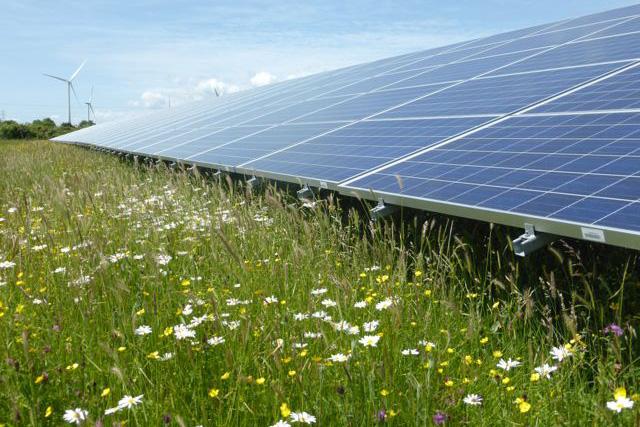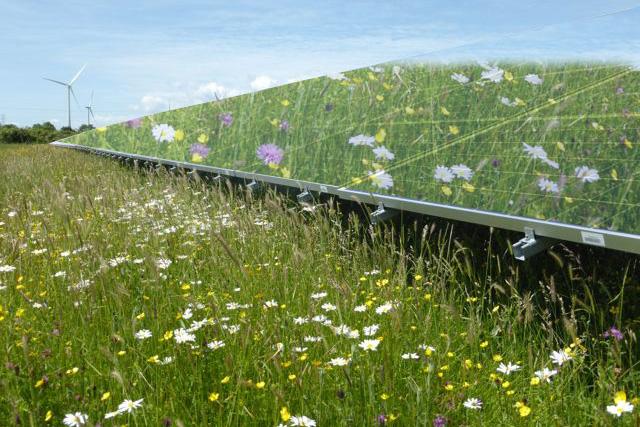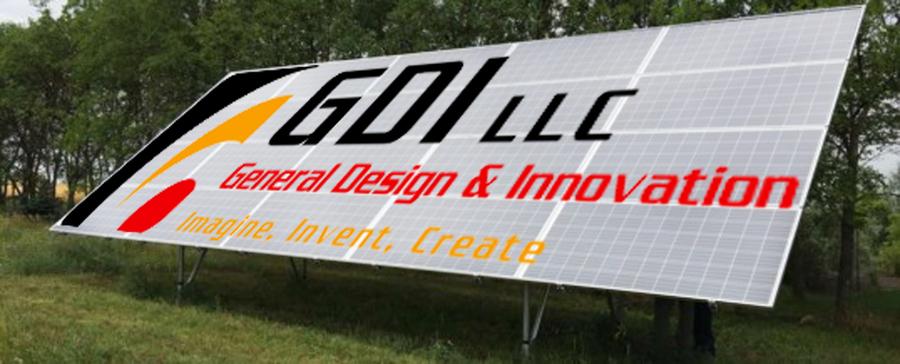Beautifying Solar Panels

By Lauren White, RCS Reporter.
A revolutionary technology allows images to be displayed on solar panel surfaces without reducing power output.
Prior to the coronavirus pandemic and the economic shutdown, solar panel installation was at an all time high. A report by the Solar Energy Industries Association (SEIA) found that in the first quarter of 2020 the solar market in the United States, “installed 3.62 gigawatts-direct current of solar photovoltaic capacity, a 42% increase year-over-year and the largest Q1 ever.” Wood Mackenzie Power and Renewables forecasts 33% annual growth in 2020, according to the report. While many projects are delayed due to the pandemic, that hasn’t stopped companies, like GDI LLC, from innovating.
GDI LLC has patented their Solar-Image™ process, which transforms unattractive solar panels into visually appealing images. With this process, solar panels can be made to look like a solid color, a full-color pattern, a panoramic photo or even a marketing ad. Even while displaying the image, the panels maintain their high output power.
Panels installed on a terracotta tile roof can present an image of the tiles underneath, essentially camouflaging the panels and making them practically disappear. Additionally, panels installed in a field of clover, could display an image of a clover field so the panels would be unidentifiable at first glance.


Instead of camouflaging, the imagery could be used for promotional purposes, displaying a corporate logo or an advertisement. According to GDI LLC, “...a large ground mounted solar array could display a corporate logo and message, or a rooftop or field array could become a billboard, displaying an advertisement.”
The technology used is a revolutionary process based on reflective nano-structure filters. “The filters are highly efficient and can be tuned to reflect over very narrow wavelengths so nearly all of the sun’s useful energy passes through to the panels,” the company explains. Similarly to how a television screen or computer produces an image, the filters reflect the wavelengths of red, green and blue light, which allows a static full color image to be produced.
Commercialization of the technology will be made possible through partnerships with established manufacturers. These partnerships will assist with both the manufacturing process of the solar panels and the technology will be an aftermarket option to help camouflage or beautify existing panels.

Stay up to date with the latest roofing industry news when you sign up for the RCS Week in Review e-news.





















Comments
Leave a Reply
Have an account? Login to leave a comment!
Sign In